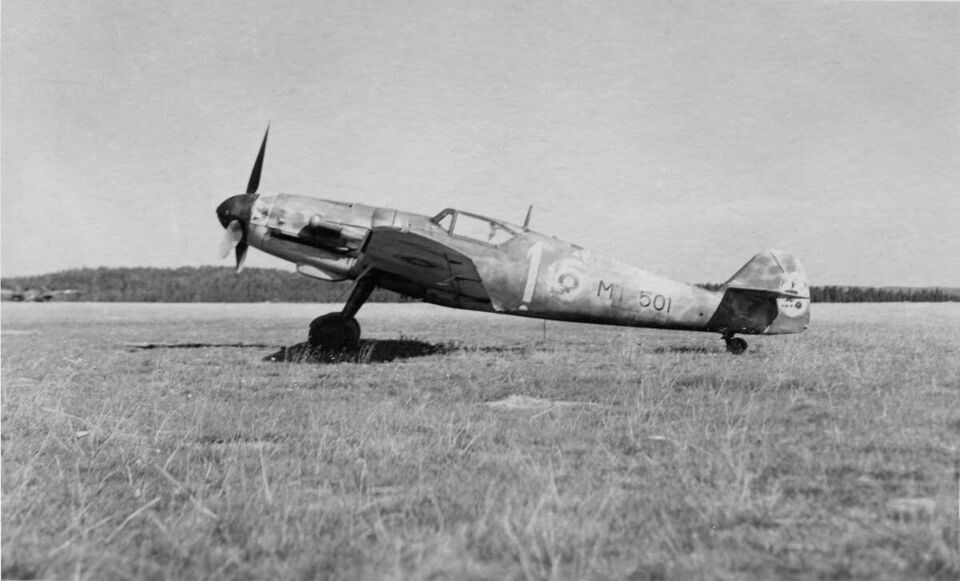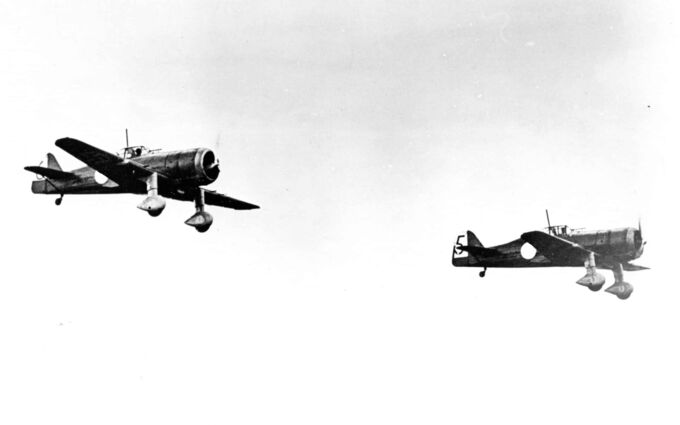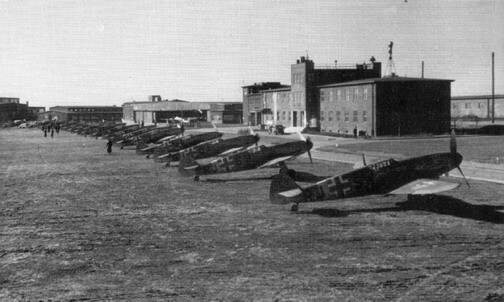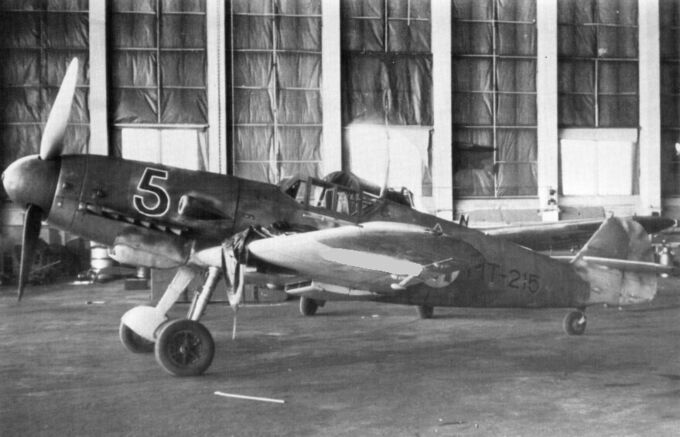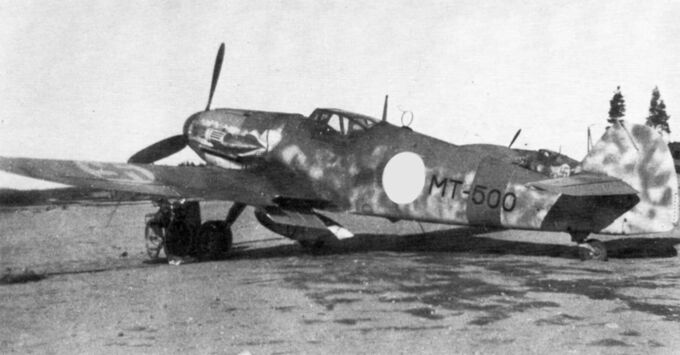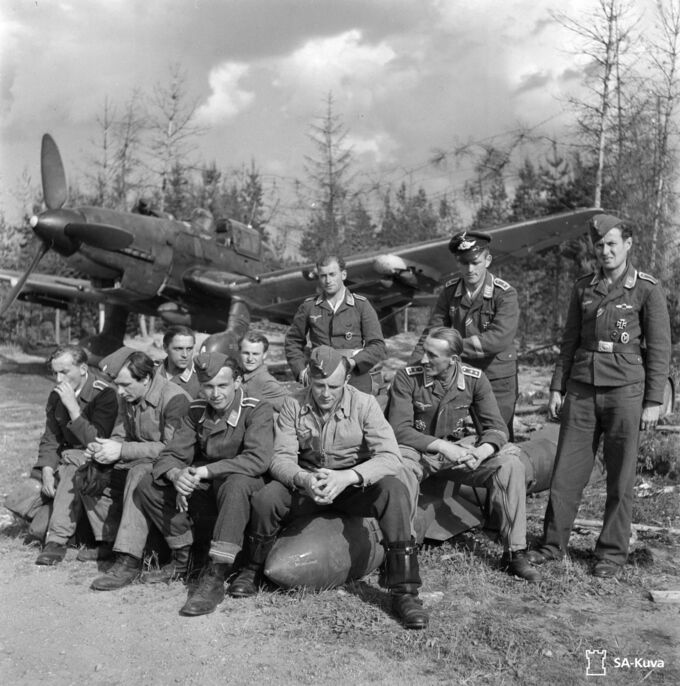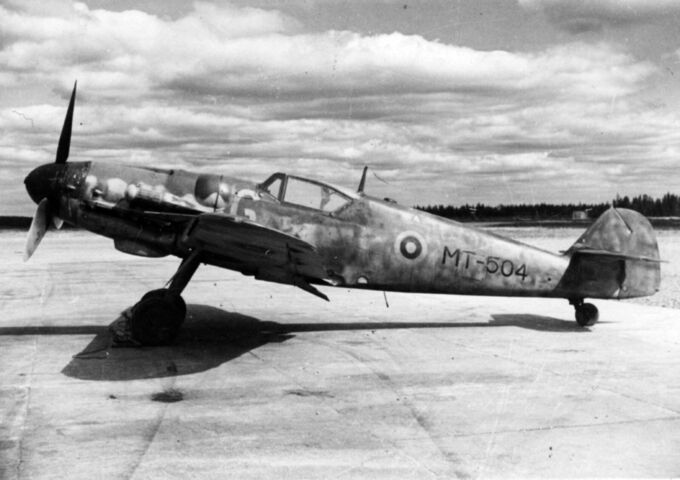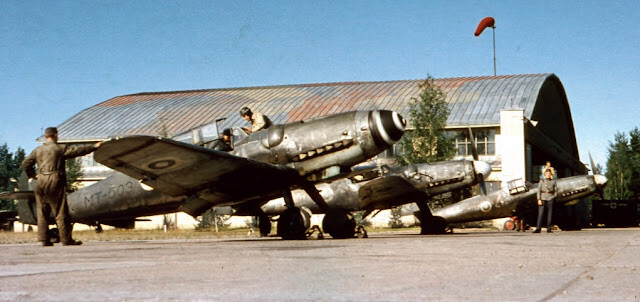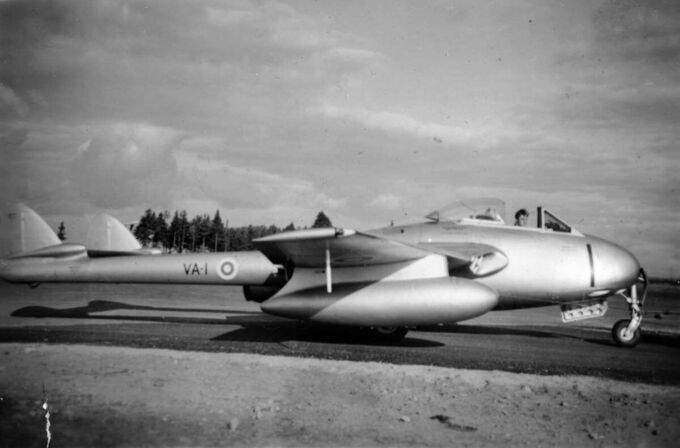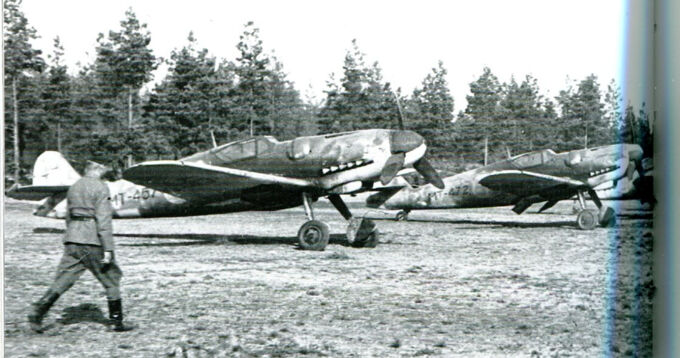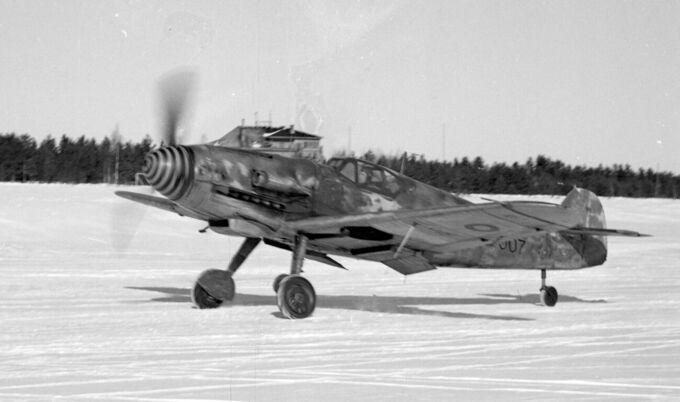The Finnish Air Force (FAF) has never impressed with its quantity of vehicles or personnel. However, as with any small military force, quality of equipment, training, and doctrine has thus been priority. The Bf 109s acquired during the Continuation War, and the lessons they taught, are a prime example of this. The following article aims to open the history behind this acquisition, its effects and aftermath: overall, what the “Mersu” did for Finland.
Background
By the beginning of 1943, mid-war, Finland’s situation with its fighter aircraft looked dire. The Moranes they used had degenerated into reconnaissance planes due to their slow speed and poor climb rate. It could not intercept the Pe-2 bomber in level flight nor during its climb. Furthermore, the Morane’s armament was very inadequate.
Finland’s fighter force also consisted of, for example, Italian G.50s, British Hurricanes, Dutch Fokkers, and American Buffalos. These among others provided variety, but not sufficient performance; new fighter aircraft had to be acquired.
Later than sooner
It is difficult to determine why the new fighters had not already been acquired from Germany during the first year of the Continuation war; they were allies, afterall. According to the military attaché in Berlin, the procurement of around 100–150 Messerschmitt or Focke-Wulf aircraft in 1942 did not seem so impossible that it would not have been worth attempting. Even the Leader and Chancellor of the Reich himself had expressed support for effectively aiding its allies with German equipment, specifically mentioning aircraft.
An underlying reason for these procurement difficulties was likely the Finnish Air Force commander, General Lundqvist’s (1896-1965) well-known anglomania and sometimes almost pathological hatred of Germans. Colonel Lorentz (1900-1963) had believed since the start of the Continuation War that Finland should begin procuring new fighter aircraft from Germany.
New toys
Due to delays, Fighter Squadron 34 was re-formed within Air Regiment 3 with new Messerschmitt Bf-109 aircraft only in January 1943. These were the first 109s Finland received. Seventeen Finnish pilots traveled to Germany for training and flew 16 of the planes back to Finland in March. The remaining aircraft arrived in May.
Under the agreement, Germany replaced any lost planes with new ones. Between August 1943 and April 1944, Finland received 18 replacement aircraft, including some Bf 109 G-2/trop models, designed for tropical conditions.
In March of 1944, Finland signed a deal for another 30 aircraft, which were delivered by early May. Although the number of planes was far from sufficient to meet the needs, their quality placed Finland’s Air Force at an international top level.
Final year
By 1944, the Air Force’s technical personnel numbered around 2,000 of whom about 1,050 were mechanics, engineers, and inspectors. The armament technical staff included approximately 500 men. Valtion Lentokonetehdas (The State Aircraft Factory) established a third production unit in Linnavuori, to which the Air Force Depot’s engine department was also relocated.
The Soviet Union’s major offensive began on June 9, 1944, involving over 1,500 fighters, attack planes, bombers, and reconnaissance aircraft. Against this, Finland could muster only slightly over 100 fighters and around 60 bombers. The Finns had only 38 Messerschmitt fighters, while around 80 fighters were under repair at the aircraft factory in Tampere and various field depots. There were 93 bombers, but 22 of them were also being repaired. As a result of President Risto Ryti’s so-called Ribbentrop Agreement, Finland received 83 additional Messerschmitt aircraft from Germany for the decisive battles at Tali-Ihantala, the Bay of Viipuri, and Vuosalmi.
Finland received Bf 109 G-6 and G-8 planes between June and August, although three were damaged during delivery flights. Among these, 14 G-6/R6 variants were equipped with 20 mm MG 151/20 cannons mounted under the wings. However, most of these cannons were removed from Finnish planes to improve maneuverability.
On June 16, a German unit, Gefechtsverband Kuhlmey, arrived in Finland, led by Colonel Kurt Kuhlmey (1913–1993), also as part of the Ryti-Ribbentrop Agreement. Kuhlmey had selected 32 Ju-87 Stuka dive bombers, 32 Focke-Wulf Fw 190 fighters, and six camera-equipped Messerschmitt Bf 109 fighters for this unit. Detachment Kuhlmey effectively doubled the Finnish fighter force on the Karelian front and increased bombing power by 50%.
The Finnish bombers were integrated with the German unit for joint air operations, which Kuhlmey approved, and this would have a significant impact on subsequent defensive battles. Battle Group Kuhlmey proved to be an efficient and highly dedicated unit in combat.
The bomber squadrons did not lose a single aircraft on missions that were protected by Messerschmitt fighters.
On June 9, 1944, the situation with Finland’s own bomber fleet was undoubtedly quite satisfactory, with a total of 93 aircraft. However, again, there were too few fighters, with only 38 Messerschmitts. These were excellent aircraft, but as wartime products, they had a relatively short service life. For example, their Daimler Benz engines had originally been designed to provide around 1,000 horsepower at maximum output. Now, without increasing the weight, 1,400 horsepower was being extracted from them.
Furthermore, the La fighters were almost as good as the Messerschmitts, and in addition were equipped with radios, while ground radar and radio intelligence supported them. The Soviet heavily armored Il-series strike aircraft were incredibly difficult to shoot down, even with a 20 mm cannon, while the DB and SB bombers from the Winter War would almost immediately crash from hits by machine gun fire. Similarly, the Pe-2s, Bostons, and others were better protected by their armament than the corresponding types from the Winter War.
The Moscow Armistice that came into effect on September 4, 1944, did not immediately transition the Air Force to peacetime operations. Five days later, orders were issued for the withdrawal of troops behind the Moscow Peace Treaty border. According to Article 4 of the interim peace agreement, which came into effect on September 19, all FAF aircraft were required to return to their bases, and flight operations were permitted only with the approval of the Allied Control Commission.
Post-War
After the one-year transitional period following the enforcement of the Paris Peace Treaty, the Messerschmitt Bf 109 G-6 fighter aircraft were designated as the only combat aircraft of the Finnish Air Force in September 1948. Over a hundred of these aircraft were still airworthy at the time. The best-preserved planes were put into active service, while the rest were moved to readiness storage. The treaty was interpreted to exclude transport and training aircraft from the 60-plane limitation. In other words, this limit affected only front line fighters.
By the 1950s, the planes increasingly suffered from technical issues and airframe fatigue. The aging condition of the aircraft also posed a growing risk to pilot safety. In terms of performance, the planes were becoming outdated, especially compared to the most advanced jet fighters of the late 1940s, such as the Soviet-made MiG-15 and the American-made F-86 Sabre.
The personnel situation of the Finnish Air Force was also poor after the wars, with shortages of both officers and technical staff. Low salaries, an uncertain future, and poor housing conditions caused concern among the personnel. Additionally, the growing civilian aviation sector attracted both pilots and mechanics to its service.
The poor condition of aircraft, lack of spare parts, insufficient technical staff, and financial constraints significantly hindered flight training in the late 1940s and early 1950s, particularly with the Bf 109.
Into the jet era
In 1952, it was decided that the British De Havilland Vampire Mk 52 “Vamppi” (VA) subsonic jet fighters would replace the Bf 109. The Vampire acquisition marked the Finnish Air Force’s first foreign aircraft purchase after the wars. However, the available basic procurement budget was sufficient for only six aircraft. The first three planes landed at the Pori airfield in January 1953, with the remaining three arriving in September.
By then, the Vampire was already outdated as a combat aircraft, lacking features such as a fighter radar or compatibility with missile armament. Nevertheless, it enabled the Air Force to commence jet training and gain better insight into advancements in aviation technology.
In total, Finnish Bf 109s were credited with 663 aerial victories during their service. The most successful pilot flying the Bf 109 was Ilmari Juutilainen, who scored 58 kills. However, modern research estimates that only about a third of reported victories were actual confirmed kills.
| Year | Types of aircraft | Number of aircraft |
|---|---|---|
| 1941 | 36 | 471 |
| 1942 | 43 | 524 |
| 1943 | 51 | 521 |
| 1944 | 53 | 534 |
| 1945 | 42 | 511 |
The Finnish Air Force’s aircraft inventory on January 1 from 1941 to 1945 consisted of a wide variety of aircraft types. This diversity did pose challenges for mechanic training and equipment upkeep. Notably, the impact of the peace treaty in 1944 influenced the number and variety of aircraft, which in turn partially laid the groundwork for the organizational reforms of the Air Force, effective from the 1950s forward.
| Dates | Type | Amount | Amount |
|---|---|---|---|
| 13.3.–7.11.43 | MT-G2 | 35 | |
| 5.1.–28.4.44 | MT-G2 | 12 | |
| 1.6.44 | MT-G2 | 1 | 48 |
| 16.3.–30.4.44 | MT-G2 | 30 | 30 |
Extract from a table listing reinforcements of military aircraft received from abroad during the war. MT-G2 = Bf 109 G-2.
Images
- “Mersu” — Messerschmitt Bf 109G Suomen ilmavoimissa — Finnish Bf 109s/ Bf 109s of JG 302 in Finland — Einsatzkommando Helsinki
- brakedrum.kuvat.fi, Osasto Kuhlmey
- Post war Messerschmitt Bf 109G6Trop Erla, asisbiz.com
- Joseph Dunford and Jarmo Lindberg, Wikipedia
- Kurfürst, Finnish Air Force Performance Trials on Messerschmitt Bf 109 G-2, WNr. 14 783 'MT-215'
- Marsalkka Mannerheimin viimeinen matka Suomeen 70 vuotta sitten, ilmailumuseo.fi
- Messerschmitt Bf 109 G-6 MT-501, Kauko Tuomikoski, Finnish Aviation Museum, finna.fi
- Fokker D.XXI (FR-110), airforcemuseum.fi
- Makedonia & Moog, Suomi 01 Juutilainen Ilmari 04 kuva 11
- De Havilland Vampire F.B.52 VA-1 Porissa kesällä 1953, Harri Grönstrand, Finnish Aviation Museum, finna.fi
Sources
… and later the Messerschmitt squadrons achieved 663 aerial victories with a kill ratio of 25:1. The numbers speak for themselves.
